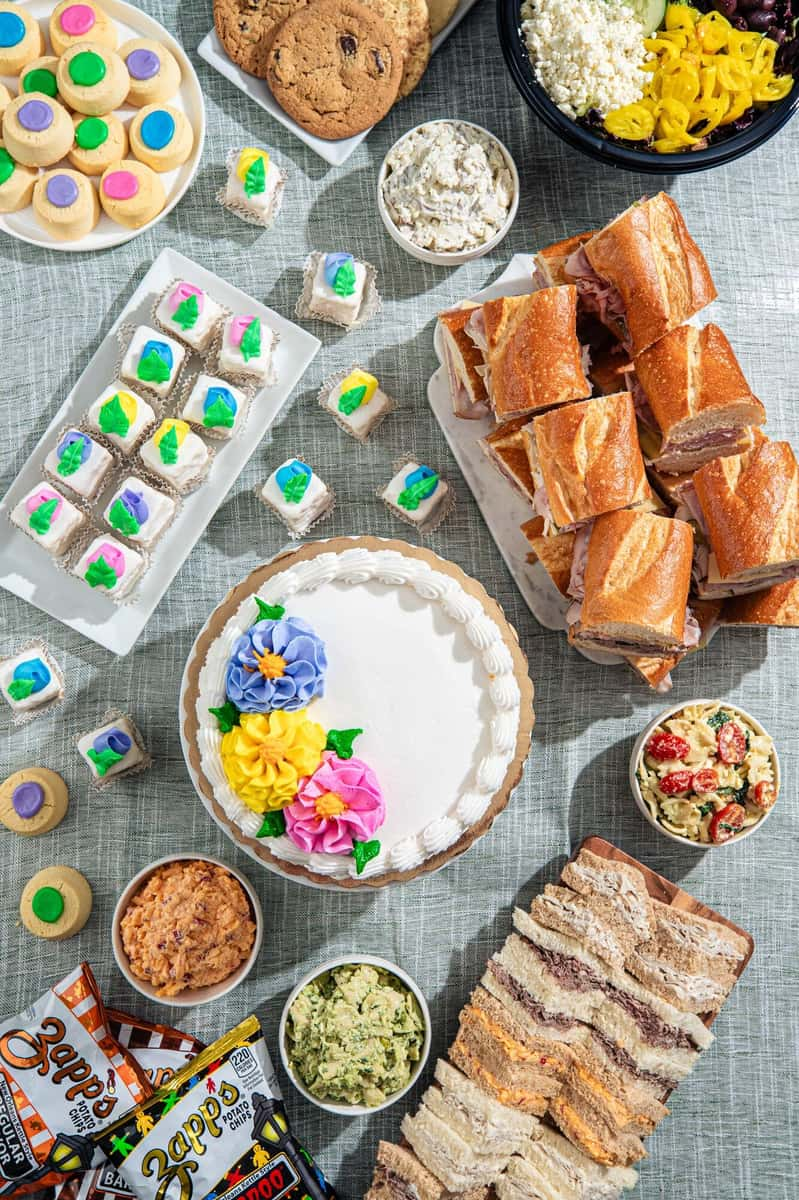Premier Bakery Catering Maddington for Delicious Treats
Recognizing the Art of Bakery Products: From Newly Baked Breads to Alluring Pastries and Finger Foods
The detailed art of pastry shop products encompasses a spectrum of methods and active ingredients that change standard components into culinary delights. From the science behind the ideal loaf of bread, where fermentation and gluten advancement play essential duties, to the skill required for creating layered pastries, each aspect reveals a compelling narrative of workmanship. The versatility of finger foods illustrates how flavor and texture can be artfully combined to engage varied preference choices. As we check out these components, one might question: what underlying concepts regulate the success of these cherished developments?
The Scientific Research of Bread Making
At the heart of every loaf of bread lies a remarkable interplay of chemistry and biology. The process of bread making starts with the combination of flour, salt, water, and yeast-- each ingredient playing an important duty in the final product.
Yeast, a living microorganism, ferments the sugars existing in the flour, producing carbon dioxide and alcohol in the procedure. The co2 gas creates bubbles in the dough, triggering it to climb and create a light texture. The temperature and moisture throughout fermentation significantly influence yeast task and, subsequently, the bread's flavor and structure.

Learning Pastry Methods
How can one accomplish the delicate equilibrium of appearance and flavor that specifies outstanding pastry? Understanding pastry methods requires a deep understanding of components, approaches, and the science behind them. Basic to this craft is the selection of top notch ingredients-- flour, butter, sugar, and eggs-- each playing a vital role in the end product's flavor and structure.
The strategy of lamination, which involves folding layers of dough and butter, produces the wanted flakiness in breads like croissants and puff pastry. Accuracy in temperature level is important, as butter must continue to be cold to make sure optimum layers. Appropriate blending approaches, such as the creaming strategy for cakes, guarantee even unification of air and fat, resulting in a light and ventilated crumb.
In addition, maintaining the best humidity degrees throughout cooking can dramatically influence the outcome, guaranteeing that pastries increase properly and accomplish that golden-brown surface. Ultimately, the art of bread additionally requires perseverance and technique; each effort boosts one's ability and understanding of the elaborate equilibrium needed to produce alluring pastries that delight the senses. Mastery in these techniques inevitably identifies a skilled bread cook from an amateur.
Kinds Of Finger Foods
The world of cooking thrills prolongs beyond breads to incorporate a large range of finger foods, which are celebrated for their ease and convenience. These bite-sized deals with are ideal for celebrations, offering a selection of tastes and appearances that provide to diverse palates.

On the sweeter side, bite-sized cupcakes and mini tarts provide a wonderful coating to any kind of dish, interesting those with a sweet tooth. Cheese and charcuterie boards serve as an advanced option, enabling guests to customize their bites with an assortment of meats, fruits, nuts, and cheeses.
Flavor Profiles in Baking
Baking is a detailed dancing of taste profiles that combines sweet, savory, and umami notes to develop an unified experience for the taste buds. Comprehending these profiles is important for bakers seeking to boost their developments.
Sweetness frequently functions as the structure in baked products, with sugars, fruits, and natural sugar boosting taste depth. Active ingredients such as delicious chocolate and caramel present intricate wonderful notes that can either dominate or enhance other flavors. Alternatively, tasty elements, often located in breads and breads, supply balance and comparison. Components like cheeses, natural herbs, and spices can transform a straightforward dough into a complex flavor click to read experience.
Umami, frequently neglected in cooking, plays a significant function in improving flavors. Components such as aged cheeses, fermented products, or even particular nuts use this link add to a mouthwatering deepness that enhances general preference.
In addition, the interplay of acidity from active ingredients like buttermilk or citrus zest can brighten flavors, using a revitalizing counterpoint to sweetness. By thoughtfully integrating these taste accounts, bakers can craft products that resonate with diverse tastes buds, developing an unforgettable culinary experience. Eventually, grasping taste accounts is vital to innovation on the planet of baking.
Necessary Cooking Devices and Active Ingredients
Understanding taste accounts in baking sets the phase for choosing the right tools and ingredients that promote the production of outstanding baked products. A dependable collection of cooking pans-- such as sheet frying pans, loaf pans, and cake pans-- is critical for accomplishing desired textures and forms.
In regards to ingredients, top quality matters significantly. Flour offers as the backbone of the majority of recipes; picking the ideal type-- be it bread, all-purpose, or bread flour-- can significantly influence the result. Sugar not just sweetens however additionally adds to appearance, while eggs function as binders and raising agents. Cooking powder and baking soft drink are important for developing lift in cakes and pastries.
Additionally, integrating taste boosters like vanilla extract, flavors, and citrus zest can elevate your developments. By making certain access to these essential Extra resources devices and ingredients, bakers can confidently get started on their cooking journey, crafting a diverse variety of fascinating baked goods.
Final Thought
Mastery in bread making, pastry prep work, and finger food discussion exposes the elaborate relationships in between procedures and components. Bakery Catering Maddington. Exploring varied taste profiles improves the baking experience, while necessary tools and ingredients give the structure for success.
How can one attain the fragile balance of appearance and flavor that specifies phenomenal bread? Fundamental to this craft is the option of top notch components-- flour, butter, sugar, and eggs-- each playing an important role in the last product's taste and texture.

Recognizing flavor profiles in baking sets the stage for selecting the right tools and ingredients that help with the creation of extraordinary baked products. Checking out varied flavor profiles enhances the baking experience, while vital tools and components offer the foundation for success.